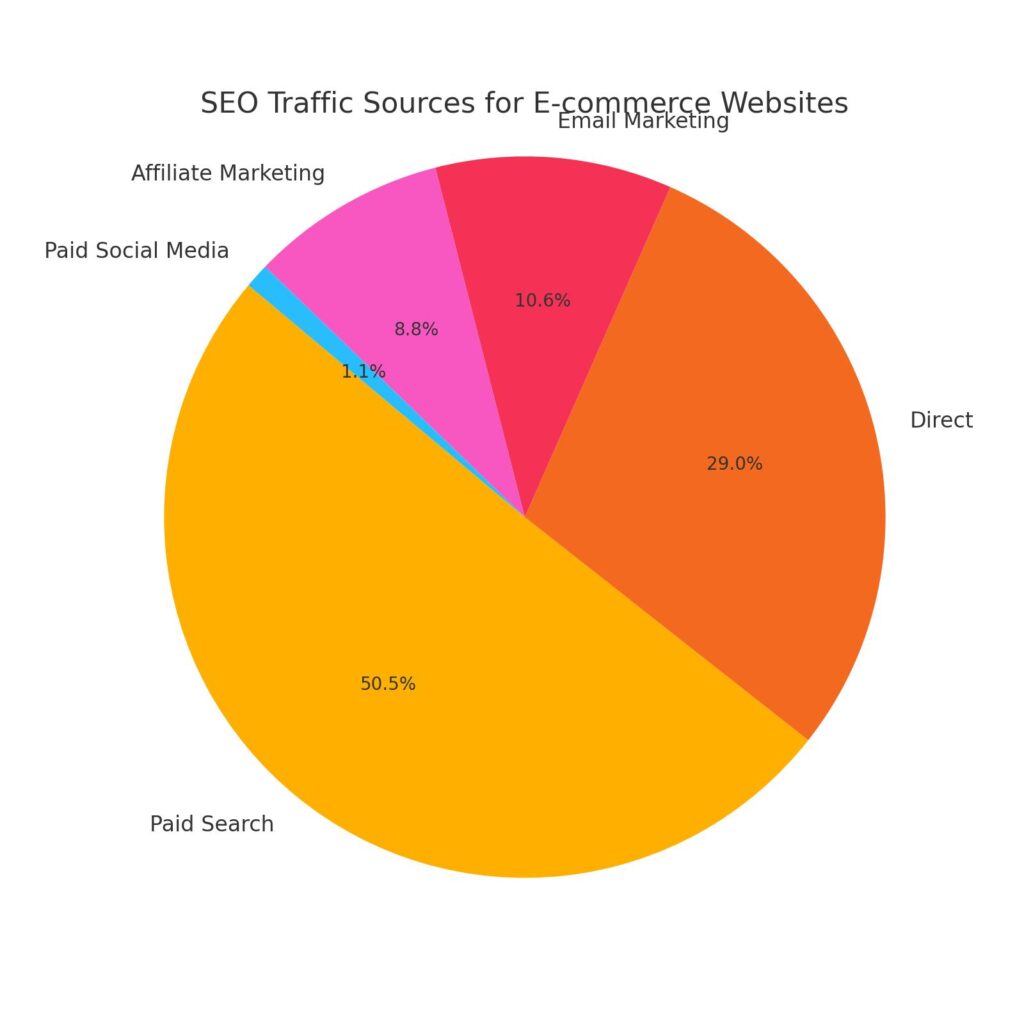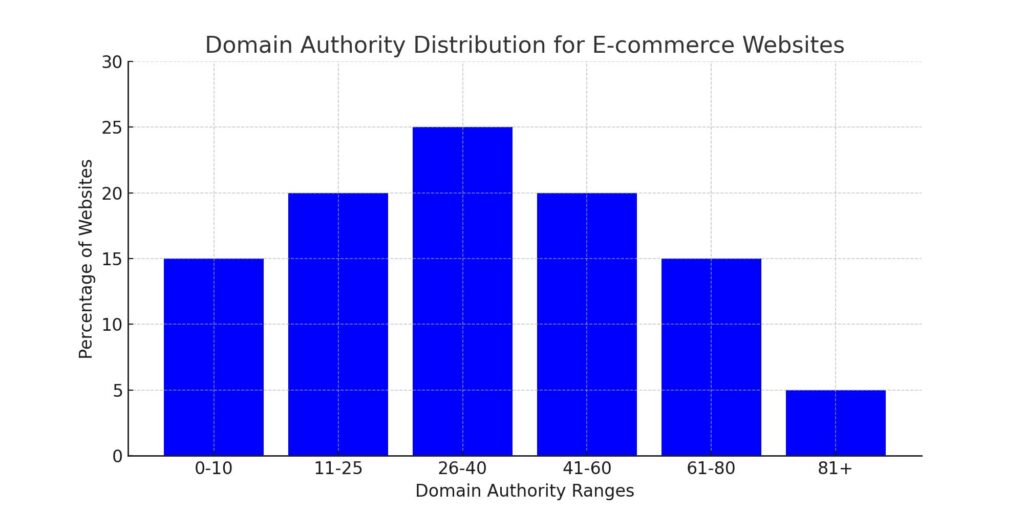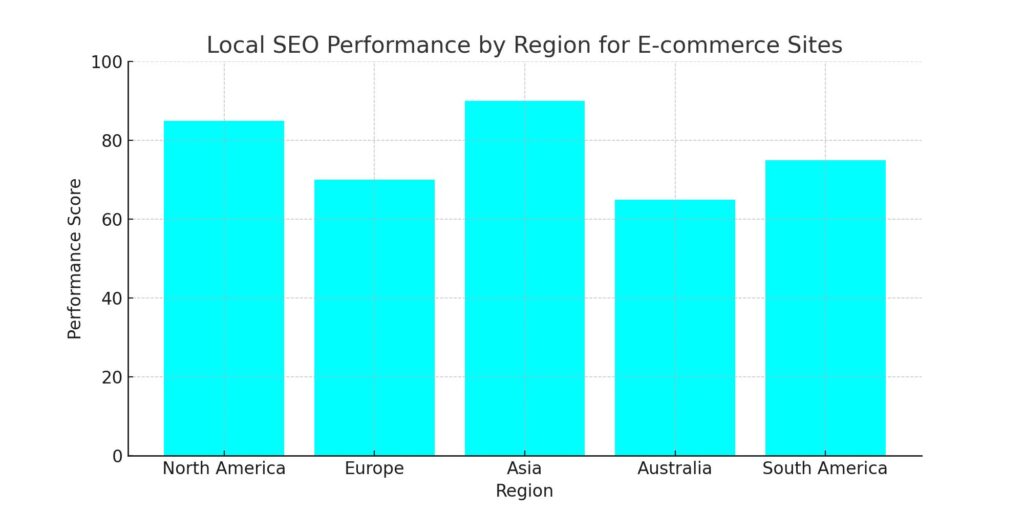Let’s be honest – you’ve probably read your fair share of “ultimate” SEO guides. They cover the basics: get some backlinks, hop on social media, maybe do some guest posting. Well, if that’s all it took to make your online store a search engine darling, everyone would be at the top, wouldn’t they?
Off-page SEO is a beast, especially for ecommerce. Sure, the fundamentals matter. But long-term success demands a strategic shift in thinking. It’s not just about the links themselves; it’s about how those links tie into your overall brand presence, reputation, and the genuine value you bring to customers.
Ready to dive deeper? Let’s explore why off-page SEO is the secret weapon for your online store.
Why Off-Page SEO is Critical for Your Online Store
- Search Engine Love: Google and other search engines see off-page factors as a huge vote of confidence in your site. Think of it as a popularity contest – the more high-quality websites linking to you, sharing your content, and giving you those virtual thumbs up, the more search engines conclude your store is the real deal.
- Traffic Beyond Ads: While paid ads bring quick wins, off-page SEO fosters organic traffic. That means potential customers finding you naturally through search, a much more sustainable growth channel.
- Local Dominance: Did you know 46% of all Google searches have local intent? Off-page SEO helps you snag top spots in those “near me” searches, vital for any store with a physical component.

Advanced Link Building: Strategies for Established Stores
Okay, you get the importance, but maybe you’re not starting from scratch. It’s time to level up your link building!
Beyond Guest Posting – Niche Link Building
Guest posting on quality blogs is great, but it’s saturated. Here’s how to stand out:
- Resource Hubs: Find niche-specific websites that list resources in your field. Think supplier directories, industry association pages, or even round-up posts on popular blogs.
- Forums & Communities: No, not to spam! Become a genuinely helpful participant in these places, and where relevant, subtly share your expertise and link back to your store.
- Example tactic: Let’s say you sell eco-friendly home goods. Seek out blogs on sustainable living, zero-waste communities, and even design forums where your products fit the conversation.
Amplify Content with Broken Link Building
This tactic is a goldmine! Here’s the play:
- Find the Breaks: Use tools like Ahrefs Broken Link Checker to find relevant sites with dead links (think resources pages, old blog posts).
- Up Your Game: Create content better than the broken link. It has to be genuinely better, not a slight upgrade.
- Reach Out: Contact the site with the broken link, being friendly and offering your fantastic new resource as a replacement.

Social Media: More Than Just Sharing
Harness niche-specific platforms
Forget trying to be everything to everyone across every social network. If you’re selling sustainable hiking gear, spending hours crafting the perfect Instagram aesthetic might not be the best use of your time (unless your target customers are hardcore #vanlife influencers).
Instead, let’s get strategic about where your ideal customers actually hang out online. Here’s how to find those hidden gems:
- Your Secret Weapon: Customer Surveys: A quick survey asking, “What social media sites do you use to discover new brands/products?” can tell you more than hours of speculation.
- Follow the Trail: See where your competitors are active, but also where their customers engage. Look at comments, tagged posts, etc., to identify smaller communities.
- Think Outside the Big Names: Are there Reddit subreddits dedicated to your niche? Passionate Facebook groups? Specialized forums? Those can be way more impactful than a lukewarm presence on TikTok.
Example: Let’s say you sell handcrafted jewelry. Sure, Pinterest is a no-brainer. But have you considered Etsy forums as a place to connect with potential buyers, showcasing your craftsmanship and personality?
Practical Tip: Choose 2-3 niche platforms to master. Going deep is better than spreading yourself thin.

Community Building, Not Hard Selling
Think of social media like a cocktail party. Would you walk in, bullhorn in hand, and immediately start shouting about your latest sale? Probably not (unless it’s a really wild party…). The same principle applies online!
Here’s how to get people genuinely interested in your brand, not reaching for the virtual block button:
- Be a Resource, Not a Salesperson: Share industry insights, answer common questions, and curate helpful content relevant to your niche, even if it’s not your content.
- Engage with the Crowd: Respond to comments, participate in relevant group discussions, and show that there are real people behind your brand.
- Spotlight Your Community: Share user-generated content, testimonials, and give shoutouts to loyal customers. It shows you appreciate them and builds trust.
Example of Doing it Right: Let’s say you sell tech accessories. A brand posting behind-the-scenes peeks at their design process is way more compelling than constant discount announcements.
Repurpose Reviews into Social-Proof Posts
Positive reviews are marketing gold, but let’s be honest, a screenshot of a 5-star rating isn’t exactly thrilling. Let’s make them pop!
- Visualize It: Use tools like Canva to turn rave reviews into eye-catching graphics with key quotes highlighted.
- The Power of Storytelling: Can you get permission to share a short customer story about how your product helped them? That’s infinitely more impactful than just a star rating.
- Contests and Incentives: Encourage reviews by offering a chance to be featured on your social channels or a small discount on their next purchase.
Quick Tip: Don’t just dump good reviews onto your own channels. Respond to reviews on platforms like Google and Trustpilot – it boosts your reputation and shows attentiveness.
Harnessing the Power of Influence
Micro-influencers vs. Big Names
Celebrities with millions of followers might seem like the golden ticket, but for many ecommerce brands, that’s not where the real value lies. Here’s the breakdown:
- Micro-influencers (Roughly 10k-100k followers):
- The Perks: Often have highly engaged, niche audiences that trust their recommendations. They might also be more affordable and open to collaborations.
- The Challenge: Requires more work to discover and vet the right fit for your brand.
- Big Names (100k+ followers):
- The Perks: Potential for wider reach and brand awareness.
- The Challenge: Can be very expensive, less emphasis on direct conversions, and their audience may not align perfectly with your target customer.
Bottom Line: It’s often not about follower count, but relevance and engagement. A micro-influencer with a passionate following in your niche can be worth more than a generic shout-out from someone with millions of scattered followers.
Finding Micro-influencers in Your Space
Here are some tools and tactics to help you find your influencer match:
- Social Listening Tools: Platforms like Brandwatch or Mention let you monitor keywords and hashtags related to your industry. See who pops up!
- Competitor Analysis: See who smaller competitors are collaborating with. Don’t copy, but it’s a good starting point.
- Influencer Marketplaces: There are niche marketplaces specifically connecting brands with micro-influencers. Do your research to find a reputable one for your industry.
Collaboration over Promotion
Forget one-off sponsored posts. Here’s how to make influencer marketing truly impactful:
- Build Relationships: Don’t just approach them with a pitch. Engage with their content first, and prioritize those who seem genuinely interested in what you offer.
- Creative Campaigns: Co-create a giveaway, host a joint Instagram Live, or offer an exclusive discount code for their followers. Get brainstorming!
- Focus On Measurable Results: Set clear campaign goals – are you aiming for increased website traffic, email signups, or direct sales? Use trackable links and promo codes for accurate monitoring.
Example 1: The Sustainable Apparel Success Story
Let’s imagine a small ecommerce store selling ethically produced t-shirts. Instead of paying a big-name influencer for a single sponsored post, they partnered with several micro-influencers in the slow fashion space.
- The Campaign: Each influencer received a few items to style and invited their followers to enter a giveaway using a branded hashtag.
- The Twist: The giveaway wasn’t just for the clothes. The brand also sponsored a small donation to an environmental charity for every entry.
- The Results: Not only did they gain significant exposure and new leads, but they also reinforced their brand values, generating tons of goodwill, and some influencers became long-term brand advocates.
Why This Works:
- Authenticity: The tie-in to both sustainability and influencer interests made the collaboration feel genuine.
- Community Engagement: The charitable aspect made it about more than just getting free stuff.
- Beyond a One-Hit Wonder: The relationships formed laid the groundwork for future collaborations.
Example 2: The Tech Accessory Brand’s Creative Gambit
Let’s say you sell stylish and functional phone cases. Instead of just sending cases to influencers for standard reviews, you took a bolder approach:
- The Campaign: You targeted tech-savvy micro-influencers known for their creative photography skills. You challenged them to incorporate your cases into visually striking photo shoots with their existing tech gear.
- The Twist: You turned the best submissions into a curated gallery on your own website and social media, tagging the influencers and highlighting their unique perspective on your products.
- The Results: This generated stunning user-generated content, positioned your cases as design-forward (not just protective), and gave those influencers an incentive to keep sharing their work with your brand tagged.
Why This Works:
- Show, Don’t Tell: It showcased the product in a real-world context far more engaging than a simple product shot.
- Influencer Empowerment: It tapped into their existing talents, making them collaborators, not just advertisers.
- Content Gold Mine: The user-generated visuals became valuable marketing assets beyond the initial campaign.
Case Study: Paws & Co.
Their Off-Page Strategy Breakdown
Paws & Co. knew getting noticed in the sea of pet brands wasn’t going to be easy. Instead of generic tactics, they focused on strategies that emphasized their unique value proposition:
- Niche Link Building: They targeted pet lifestyle blogs and publications focused on sustainability and design for guest posts, showcasing their craftsmanship and eco-friendly materials.
- Community Outreach: Partnered with local animal shelters to run donation drives, offering discounts to supporters in exchange for social media mentions and links back to their site.
- Influencer Collaborations: Focused on pet micro-influencers with a stylish aesthetic. They emphasized creative product photography campaigns and offered exclusive ‘ambassador’ discounts to incentivize ongoing content creation.
Results and Metrics
Paws & Co.’s dedication to thoughtful off-page SEO led to impressive results:
- Organic Traffic Growth: Saw a 35% increase in website visitors from search engines within six months of strategy implementation.
- Improved Keyword Rankings: Moved to the first page for valuable keywords like “sustainable dog collars” and “handmade pet accessories”.
- Backlink Boom: Gained high-quality backlinks from reputable pet blogs and niche publications, boosting their domain authority.
- Community Growth: The shelter collaboration not only led to increased brand awareness but also resulted in a surge in social media followers and positive user-generated content.
Key Takeaways:
- Niche Matters: Paws & Co.’s success highlights the importance of targeted link-building and finding the platforms where their ideal customers were already present.
- Impact Beyond Links: Their focus on community and impactful collaborations showcases how off-page SEO benefits go beyond search rankings alone, strengthening overall brand reputation and reach.

The Future of Ecommerce Off-Page SEO
The strategies we’ve discussed lay a fantastic foundation, but staying ahead means adapting to an ever-changing environment. Here’s a peek into where off-page SEO is headed:
Local SEO’s Increasing Role
If customers searching for “pet accessories near me” can’t find your store, even the best link-building won’t save you. Here’s where to focus:
- GMB (Google My Business): Claim and optimize your profile. Encourage reviews – they heavily influence local search results.
- Local Directories: Get listed in relevant local and niche-specific directories with consistent business information.
- Location-Focused Content: Can you partner with a local pet blogger or write a guide to dog-friendly spots in your area featuring your products?


Image and Video Optimization
Visuals are how people often discover products! Here’s how to capitalize on this trend:
- Descriptive File Names and Alt Text: Search engines can’t ‘see’ your images, so tell them what’s there!
- Example: Instead of IMG1234.jpg, use “custom-leather-dog-collar-beach.jpg”
- Video Platforms: Create short product demos or tutorials for YouTube and optimize them with relevant keywords.
- Visual Social Proof: Encourage user-generated content with your products on platforms like Instagram and Pinterest.
Voice Search Considerations for Ecommerce
Optimizing for how people speak their searches is becoming critical. Think about:
- Long-tail Keywords: People use more natural phrasing with voice search (e.g., “Where can I buy eco-friendly dog toys online” vs. just “dog toys”)
- FAQ Content: Creating blog posts or website sections answering common questions in full sentences helps capture those voice queries.
- Structured Data: This behind-the-scenes code helps search engines understand product details, critical for accurate voice search results.
Tools to Power Up Your Off-Page Game
We could do an entire guide on just the tools out there! Here’s a starting point with a mix of niche and versatile options:
- Link Building:
- Social Media Management:
- Hootsuite or Sprout Social: Scheduling, analytics, and social listening capabilities.
Important: Tool choice depends on your budget and team size. Some do require an investment, so be sure to utilize free trials!
Conclusion
Whew! We covered a lot – from building those crucial links to harnessing the power of social media. Now, it’s your turn to take action! Here’s the deal:
- Got Burning Questions? Whether it’s about a specific tactic or a unique challenge you’re facing, don’t hesitate to ask in the comments below. Let’s tackle them together!
- Success Stories to Share? Did you try a strategy from this guide that worked wonders? Or maybe you’ve got a tried-and-true off-page tactic we didn’t cover. Let’s all learn from each other!
- Want to Dive Even Deeper? If you’re ready to level up your off-page SEO game even further, I offer [Insert your service or resource – consultation calls, a downloadable checklist, etc.]. It’s designed to give you that tailored action plan for your specific needs.
Final Note
Remember, off-page SEO is a marathon, not a sprint. Celebrate the wins, learn from what doesn’t work perfectly the first time, and you’ll see your organic search presence steadily climb. I’m rooting for you!
